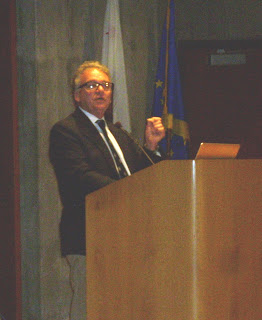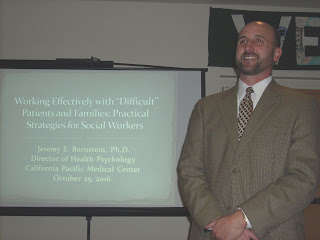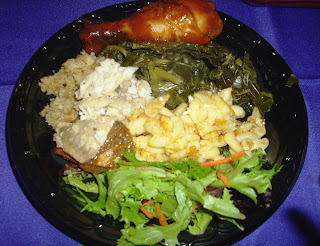Since George
Michael's death at age 53 this past week (truly his “Last Christmas”),
I’ve been listening to this bootleg cassette tape of his addictive pop music when
he was part of the duo Wham! I remembered Wham! made history as the
first Western pop group to perform in China in 1985, which was captured in their “Freedom” video, as well as their “Foreign Skies” documentary. Those images made me
nostalgic for pre-1989 China, where I did my study abroad at Peking and Fudan
universities: the lack of bourgeois vanity in make-up
free faces and utilitarian Mao suits;
moving qi via martial arts and
bicycling; all ages occupying public places, etc. Interestingly, I was the only Chinese
participant in a mostly Jewish group (also Maoist/Marxist sympathizers) led by
intellectual property expert Peter Jaszi of The American University, when I
bought this copyright infringement tape (Made in China)! Growing
up during the harshness of Reaganomics and the rise of homelessness,
China’s socialist safety net was appealing ... if only it could exist with political freedom!
Make It
Big (just like 1980s Wham! George Michael J) hair and skirt (useful for squat toilets) … at the end of my China study abroad, I visited my mum's elderly aunt and uncle in Hong Kong .
Since the
outcome of last month’s election, many clients have reported anxiety,
depression and stress (—but no memory loss!) over the future of disability rights and safety net programs (Social Security, Medicare, Medicaid, etc.) under Republican control of the
Presidency and both houses of Congress. I
cheerfully remind clients of our San Francisco bubble: Proposition I aka Dignity Fund passed,
which means increased funding for home and community based services for seniors
and people with disabilities!
I thought about the wisdom of 67-year-old Carolyn Davidson, who took a part-time job at a senior center following her retirement 5 years ago after decades as a social worker supporting older adults. When her skin cancer diagnosis and treatment last year prevented her from working, her financial resources were strained:
I thought about the wisdom of 67-year-old Carolyn Davidson, who took a part-time job at a senior center following her retirement 5 years ago after decades as a social worker supporting older adults. When her skin cancer diagnosis and treatment last year prevented her from working, her financial resources were strained:
“Retirement has left her on a fixed monthly income of $1,088 from Social
Security, which suits her just fine. She also
receives $194 in food stamps and gets help from a local food pantry operated by
Catholic Charities Brooklyn and Queens , one of
the eight organizations supported by The
New York Times Neediest Cases Fund…
Because Ms. Davidson’s income disqualified her from receiving
traditional Medicaid, she had to enroll in a
reduced Medicaid plan for higher earners and has had to use her own money to
pay off portions of medical bills. After paying her $663 monthly rent and more
in utilities, she has only $389 remaining each month to pay for everything else
and any unexpected costs.
In April, she received a
hospital bill for $239. She could not afford it. The debt halted her Medicaid
benefits.”
--A ‘Do It’ Kind of Woman Waits for the Strength to Get Back to Being Herself, The New York Times (December 20, 2016)
Fortunately,
as an experienced geriatric social worker, Ms. Davidson was able to secure relief
from a charitable organization, allowing her Medicaid plan to resume. She also avoided bankruptcy, though she
experienced the top 3 reasons why people go bankrupt:
unexpected medical expenses, reduction of income and job loss. As Ms. Davidson told The New York Times, “There are so many
things that seniors don’t know they are eligible for, it’s ridiculous.”
As late Bob Marley, paraphrasing Matthew 16:26,
sang in Zion’s Train: “Don't gain the world and lose your soul,
Wisdom is better than silver and gold” (mural from Haight Central Market)
Retirement
in old age is associated with freedom to live at home and to do what one wants,
especially if one has deferred gratification from years in the workplace. But at any age, lack of income limits this freedom
of choice … or one needs to be very resourceful to access opportunities.
Freedom to age in place
In mostly capitalist U.S.A., income and health (or ability to carry out activities of daily living) often determine where and how one can age in place.
With my work focused on home visits to homebound seniors, in a non-profit that limits training during work hours since focus is on production quantity, my world gets smaller like my clients... so I continually make efforts to attend training/networking events outside of work hours to learn tips and resources available to my clients and future self (as aspiring older adult). One advantage of these meetings held in evenings/weekends is the availability of food and refreshments!
In mostly capitalist U.S.A., income and health (or ability to carry out activities of daily living) often determine where and how one can age in place.
With my work focused on home visits to homebound seniors, in a non-profit that limits training during work hours since focus is on production quantity, my world gets smaller like my clients... so I continually make efforts to attend training/networking events outside of work hours to learn tips and resources available to my clients and future self (as aspiring older adult). One advantage of these meetings held in evenings/weekends is the availability of food and refreshments!
SFSU
Gerontology Class of 2014 had mini-reunion on-campus (1/3 of class pictured above with popular Professor Brian De Vries) at this month’s Gerontology Celebration
honoring classmate Raenika Butler, who was inspired by the work of late African-American
gerontologist George W. Davis,
and works as Executive Assistant to his partner, Cathy Davis, Executive
Director at Bayview-Hunters Point Multipurpose Senior Services (BHPMSS). In June 2016, they helped realize Dr. Davis’
vision of an “Aging Campus” with the grand opening of Dr. George W. Davis Senior Center and Residence, including 121 units of low-income senior housing. Over 4,000 applications were submitted; seniors age 62+, with income of $35,700 or less per year, pay rent at 30% of their income. Mary Schleeter and Diane Houlton, classmates who
founded Aging Plan-It, commuted from Sacramento
Freedom to eat
The growing diet divide between rich and poor has been attributed
to food cost, time cost, and heavy marketing of junk/fast food to low-income
people. Convenience food manufacturers have come between eaters and
the kitchen, so TV dinners and microwaveable meals replace home cooking.
In “The Symbiotic Relationship Between
Oral Health, Nutrition, and Aging,” published in ASA’s Generations Fall 2016 issue, Ronni Chernoff wrote about the role
of on-demand meal services in promoting food security, from Meals on
Wheels to food delivery apps.
At Home With Growing Older’s forum on Food on the Table–Aging in Place
featured Chief Government Affairs Officer Anne Quaintance of high touch, non-profit (one of the highest ranked charities in the Bay Area,
according to Charity Navigator)
Meals on Wheels San Francisco (MOWSF), and Marketing Manager Clare O’Brien of high
tech, for-profit UberEATS.
The presentations and ensuing discussions were a real commentary
on our growing digital divide (UberEATS users who have smart phones to use app
v. some MOWSF clients who don’t even have phones) and income inequality (UberEATS
users can afford minimum $4.99 delivery charge v. some MOWSF clients can’t afford
suggested contribution of $5 daily for 2 subsidized home-delivered meals).
While Uber has partnered with healthcare providers to enable Americans (or 70% of Americans age 65+) without smartphones to access ride hailing services, this is not yet an option at UberEATS. Audience also raised concerns about Uber’s contribution to traffic congestion (no less its controversial driverless cars running red lights) in San Francisco. Last year, Uber partnered with AARP's Life Reimagined to recruit older drivers with safer driving records, yet only 23% of Uber drivers are age 50+.
While Uber has partnered with healthcare providers to enable Americans (or 70% of Americans age 65+) without smartphones to access ride hailing services, this is not yet an option at UberEATS. Audience also raised concerns about Uber’s contribution to traffic congestion (no less its controversial driverless cars running red lights) in San Francisco. Last year, Uber partnered with AARP's Life Reimagined to recruit older drivers with safer driving records, yet only 23% of Uber drivers are age 50+.
Anne emphasized that MOW delivers more than a meal (“nourishing
the whole person”) – relationships that support a client’s ability to live
safely at home. MOWSF actually knows their
3,600+ clients (who are subject to social work and nutrition assessments):
92% are age 60+ and 75% live below poverty. (For more about food justice, check out blog post about my participation in Oxfam’s Hunger Banquet moderated by Anne.) In contrast, UberEATS is transaction-based, eat anything
you can have restaurant made-to-order, so it doesn’t collect data on users
(nice for folks who value their privacy), but relies on third-party research
firm to estimate 6% of UberEATS users are age 65+.
Anne with MOWSF Social Work Supervisor Lara Medvedeva and Department
of Aging & Adult Services (DAAS) Nutritionist Linda Lau. MOWSF provides 85% of the home-delivered meals
funded by DAAS!
Freedom to dodge Xmas
During Christmastime, articles galore are published about lonely seniors during this holiday season. This year, National Association of Area
Agencies on Aging (n4a) and AARP partnered on a campaign, "Home for the Holidays," to raise awareness about loneliness among the elderly during the holiday season,
combating stigma while providing tips and resources to stay connected and
engaged. Age UK has a similar campaign, “No one should have no one at Christmas,” providing befriending services with volunteers who visit or make calls to seniors feeling lonely.
Given the wonderful diversity
of San Francisco’s senior population,
some of my
homebound clients don’t seem affected by more loneliness during this particular
holiday season, especially those who don’t buy into this commercial pagan holiday, but find it
particularly alienating like Puritans who banned Xmas in the New World. And I
have other clients with profound forgetfulness such that they always seem oblivious
to time and thus have no expectation/pressure of imposed merriment, gluttony,
gift exchanges, etc.
In past years, I would escape the commercial
holiday season by flying to a developing country too poor for mass
consumerism. Then starting last year,
I volunteered at Kung Pao Kosher Comedy, 3 nights of Jewish stand-up comedy in
an American-Chinese restaurant with proceeds benefiting non-profit
organizations, such as Legal Assistance to the Elderly (last year) and JFCS
Seniors at Home (this year).
Lisa and Volunteer Macher
Shani Heckman on stage for raffle drawing before full house of all ages and
mostly Jewish at Chinese restaurant... almost felt like my China study abroad experience J! All 3 nights, both 7-course banquet dinner & dim sum cocktail shows,
completely sold out! This year’s
comedians included aging and grandma jokes by headliner Elayne Boosler, Eddie
Sarfaty (writer of video short, Second Guessing Grandma)
and Alex Edelman.
Sunie Levin, author of Make New Friends...Live Longer: A Guide for Seniors (2010), said Seniors need chutzpah: "Yes, I can. Why not? What's to lose by trying?"
25th Annual Kung Pao Kosher Comedy scheduled Dec. 23-25, 2017!
25th Annual Kung Pao Kosher Comedy scheduled Dec. 23-25, 2017!
To my homebound clients unable to attend Kung
Pao Kosher Comedy, I recommend ordering take-out from Chinese restaurants that
offer free delivery—cut out the middle guy (UberEATS) and tip the restaurant
driver, instead! Then, sing-along to Darlene Love’s “Christmastime for the Jews” (named one of the greatest rock & roll
Christmas songs by Rolling Stone). Other suggestions: Wham! playlist and Woody Allen DVDs from SFPL Books by Mail.













































